Abstract
A monoclonal antibody, 1D8, which recognizes a cell-surface antigen expressed by human chromosome 3 in Chinese hamster-human somatic-cell hybrids, has been produced. Testing of hybrids containing various deletions of chromosome 3 determines that the gene encoding the antigen is regionally localized to 3q (cen-22). This regional mapping is distinct from that elsewhere reported for two other cell-surface antigens assigned to chromosome 3--namely, the human transferrin receptor and the p97 melanoma-associated antigen. In addition, biochemical characterization is different from that elsewhere reported for other chromosome 3-encoded cell-surface antigens. When tested against a panel of rare-phenotype red blood cells, the only cells that failed to react were those of the Rhnull phenotype. The antibody reacts only weakly with homozygous -D- and fetal red cells, in contrast with a previously described antibody, R6A, which does not react with Rhnull cells. Furthermore, R6A does not recognize a cell-surface antigen expressed by chromosome 3 in Chinese hamster-human somatic-cell hybrids. Thus, the monoclonal antibody 1D8 recognizes a previously undescribed cell-surface antigen encoded by human chromosome 3 and not expressed on Rhnull cells. The gene on chromosome 3 regulating expression of this antigen may be that defective in Rhnull disease or may require the normal allele at an unlinked Rhnull locus for expression. Linkage studies will be required to further elucidate this matter.
Full text
PDF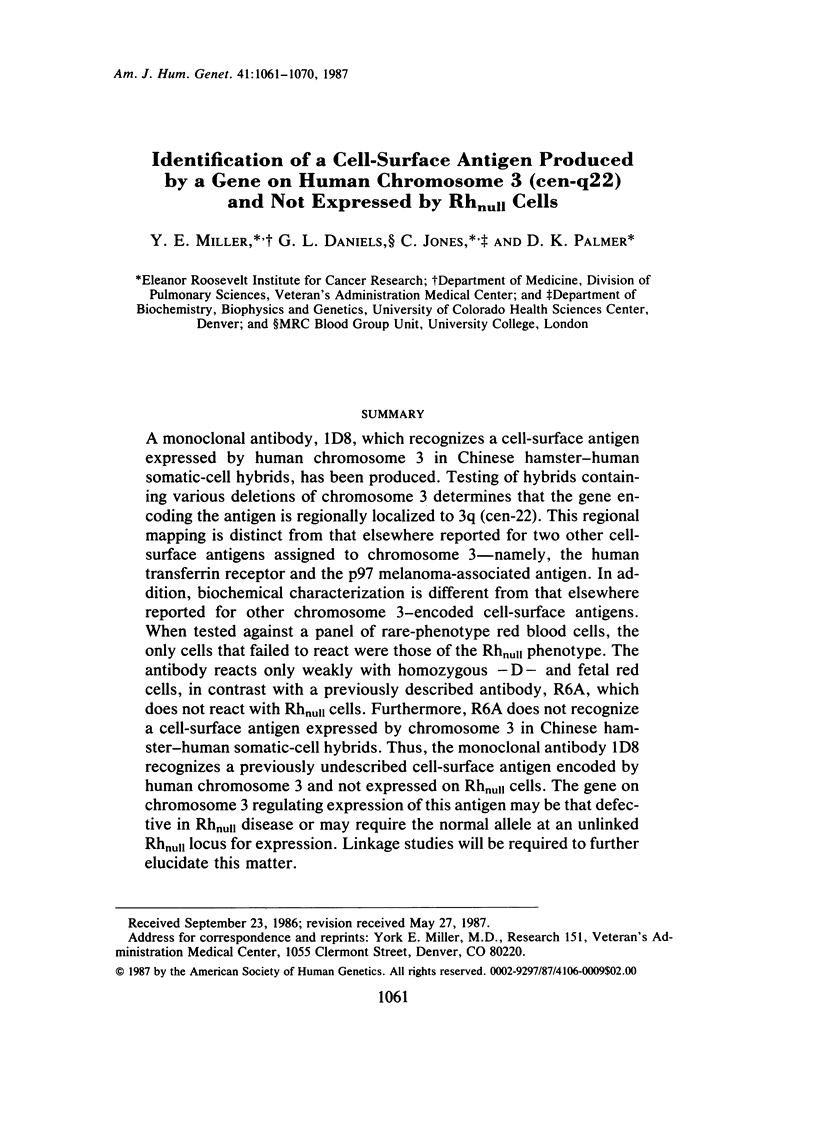
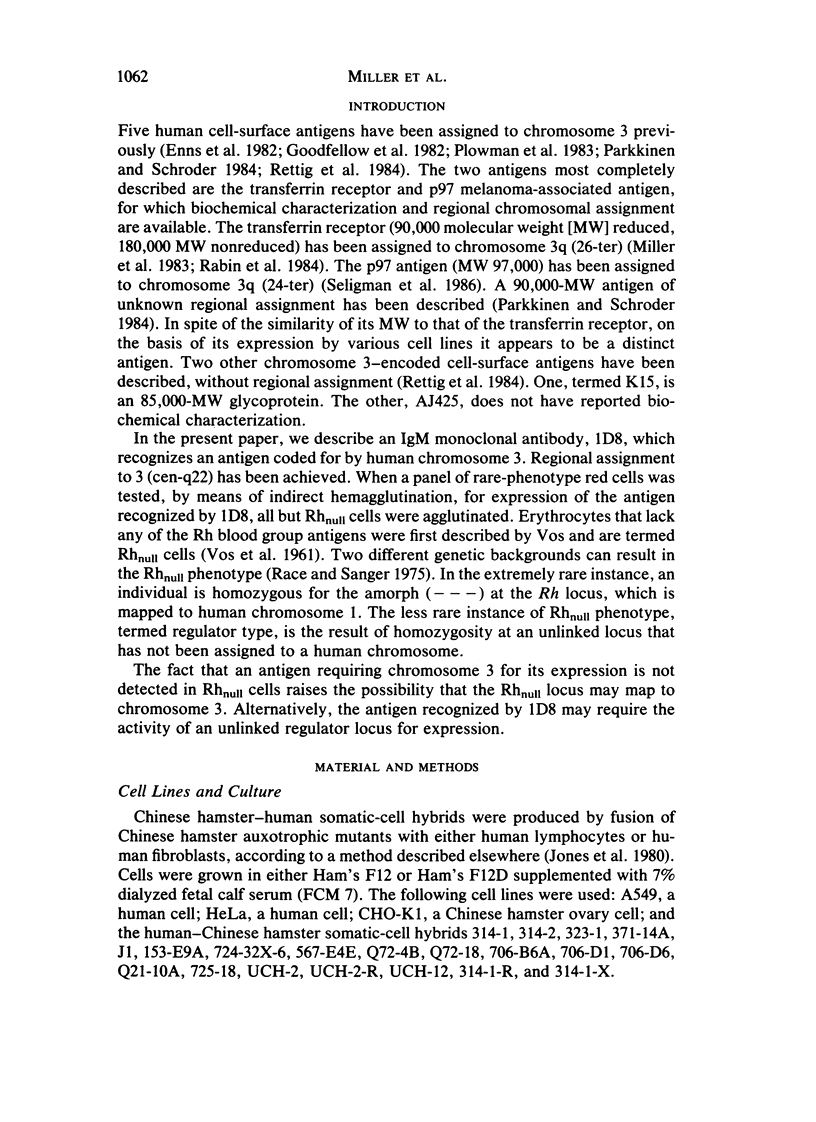
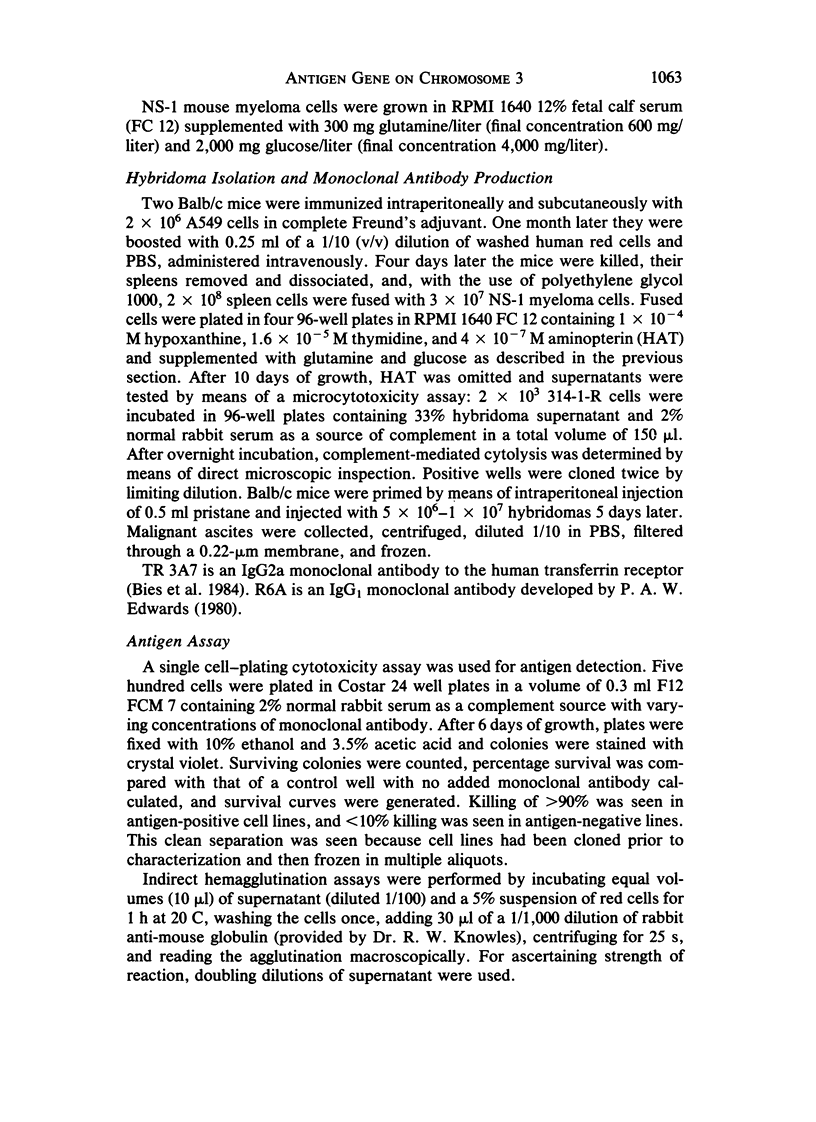
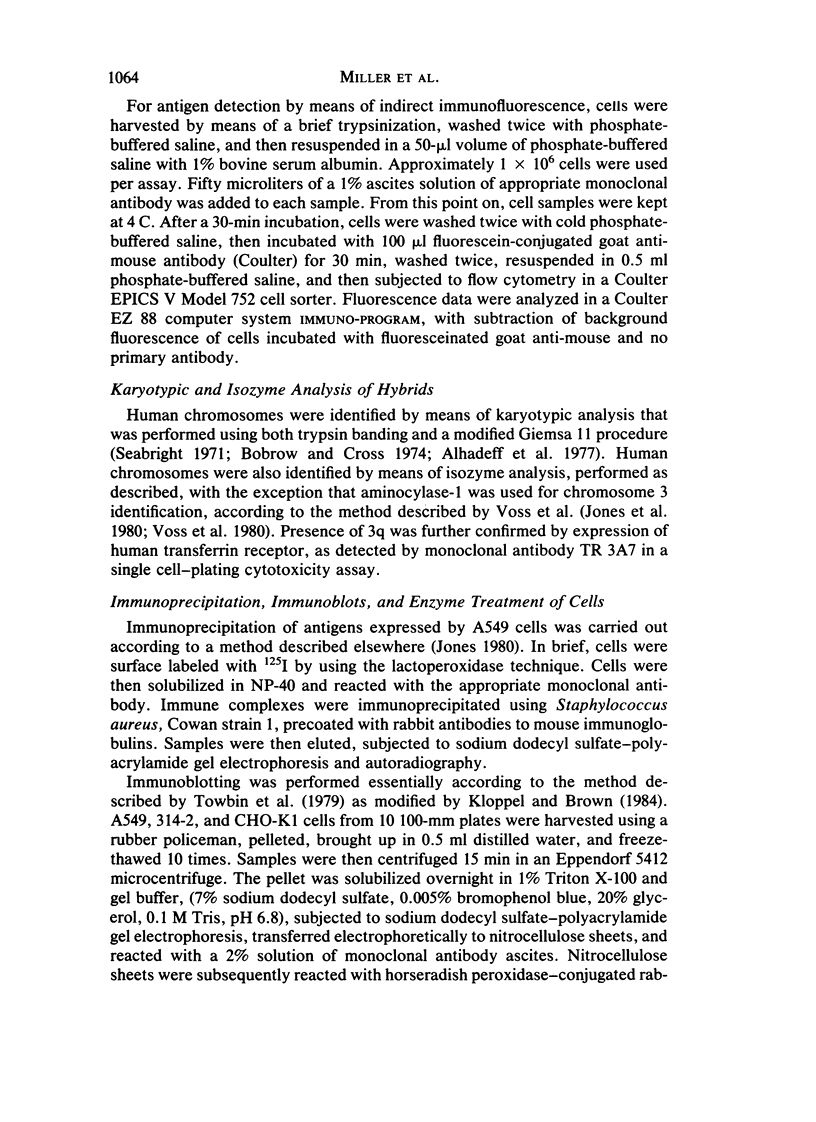
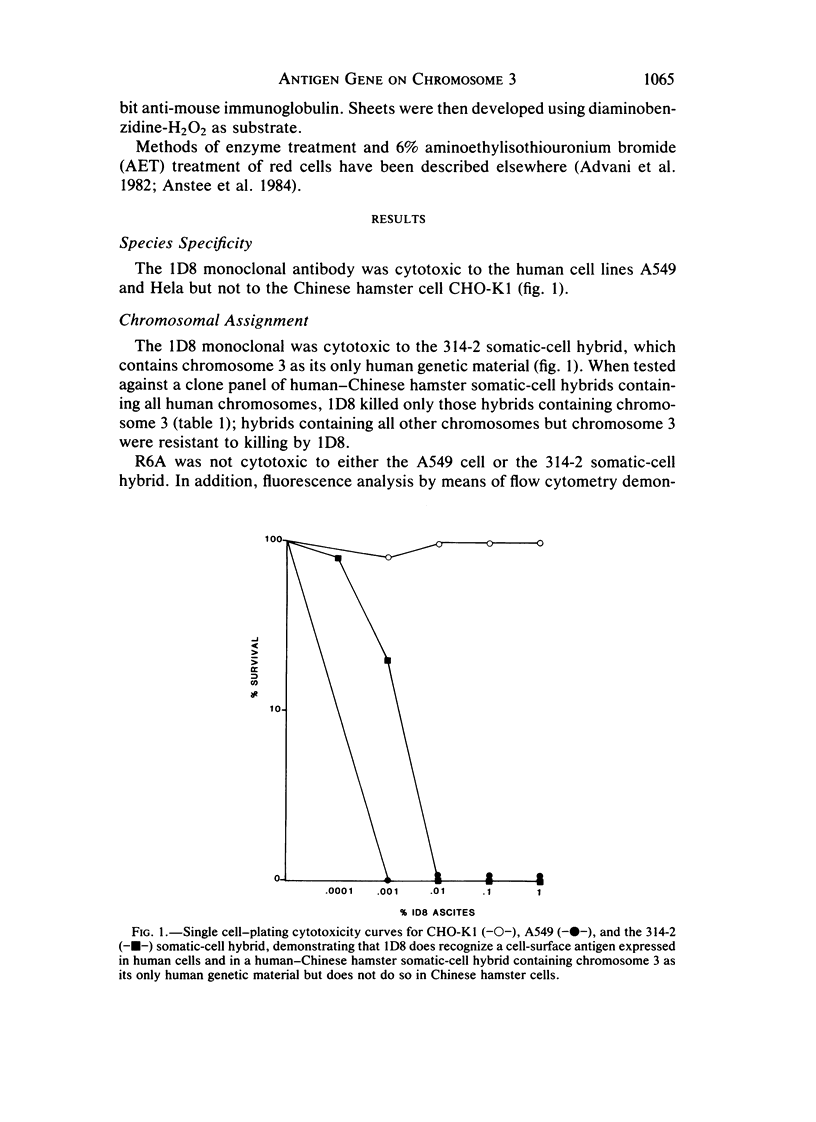
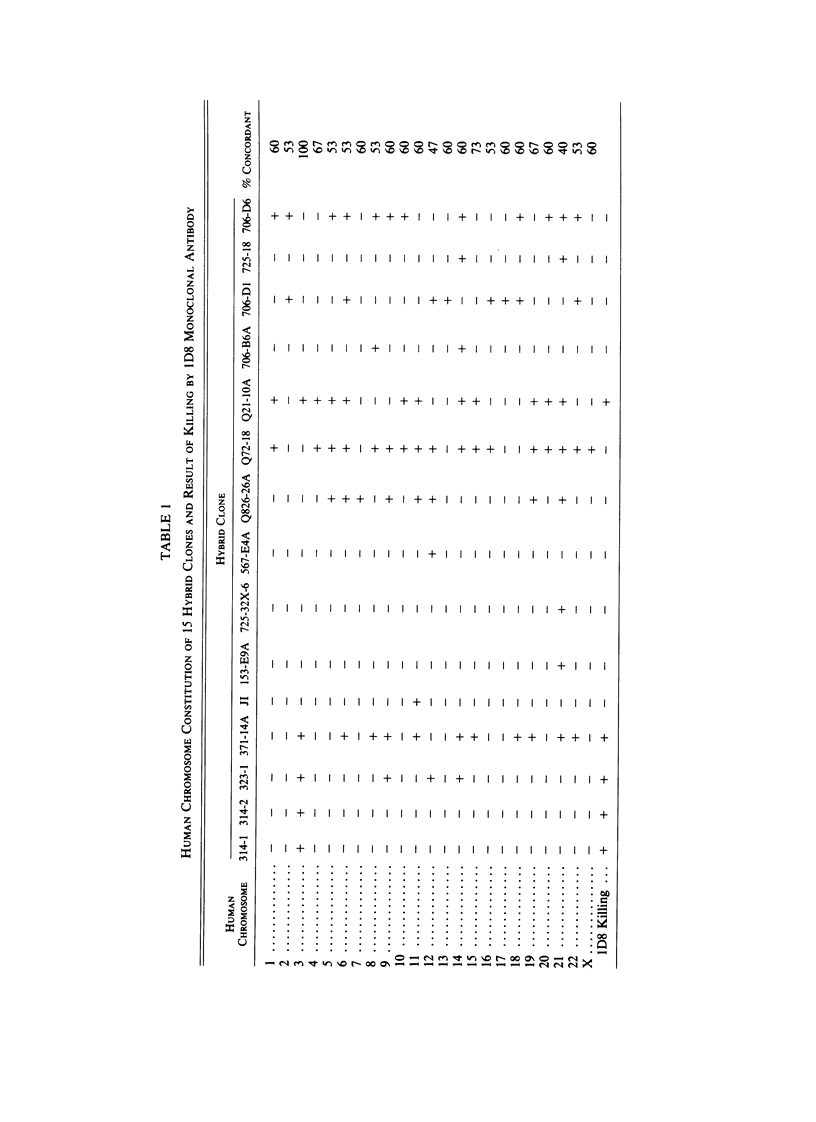
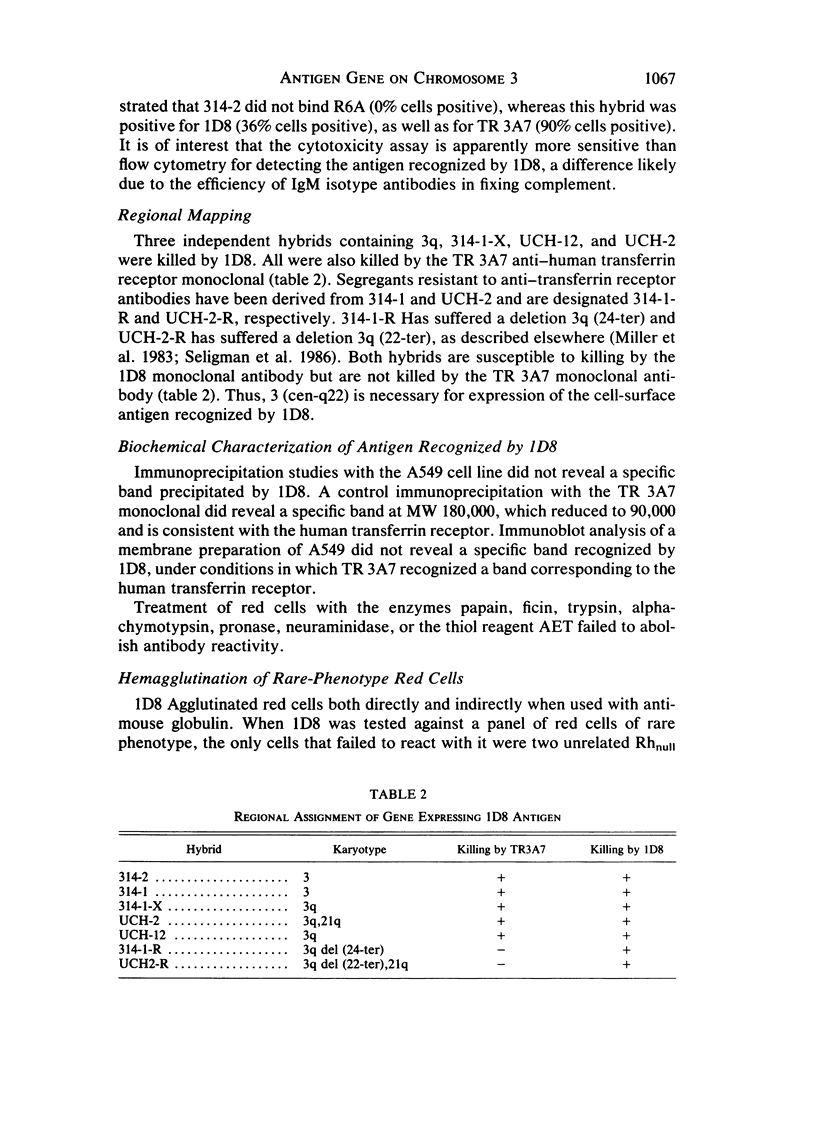
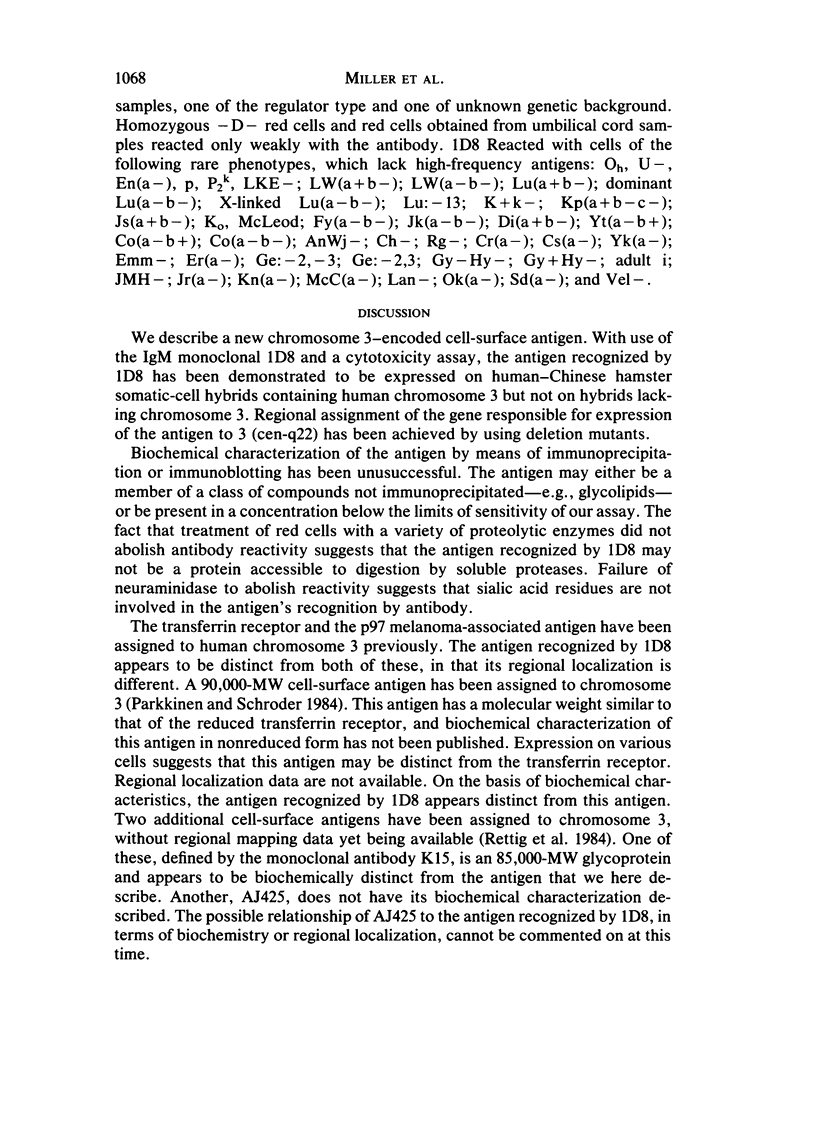
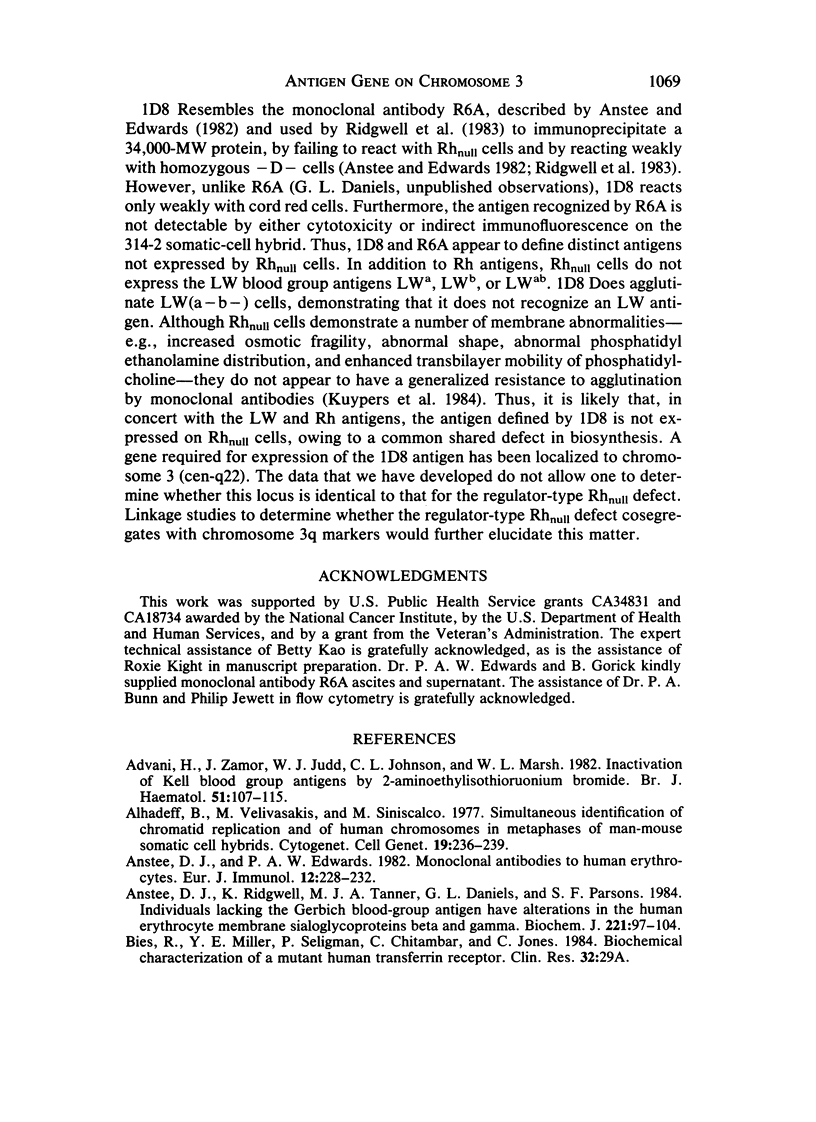
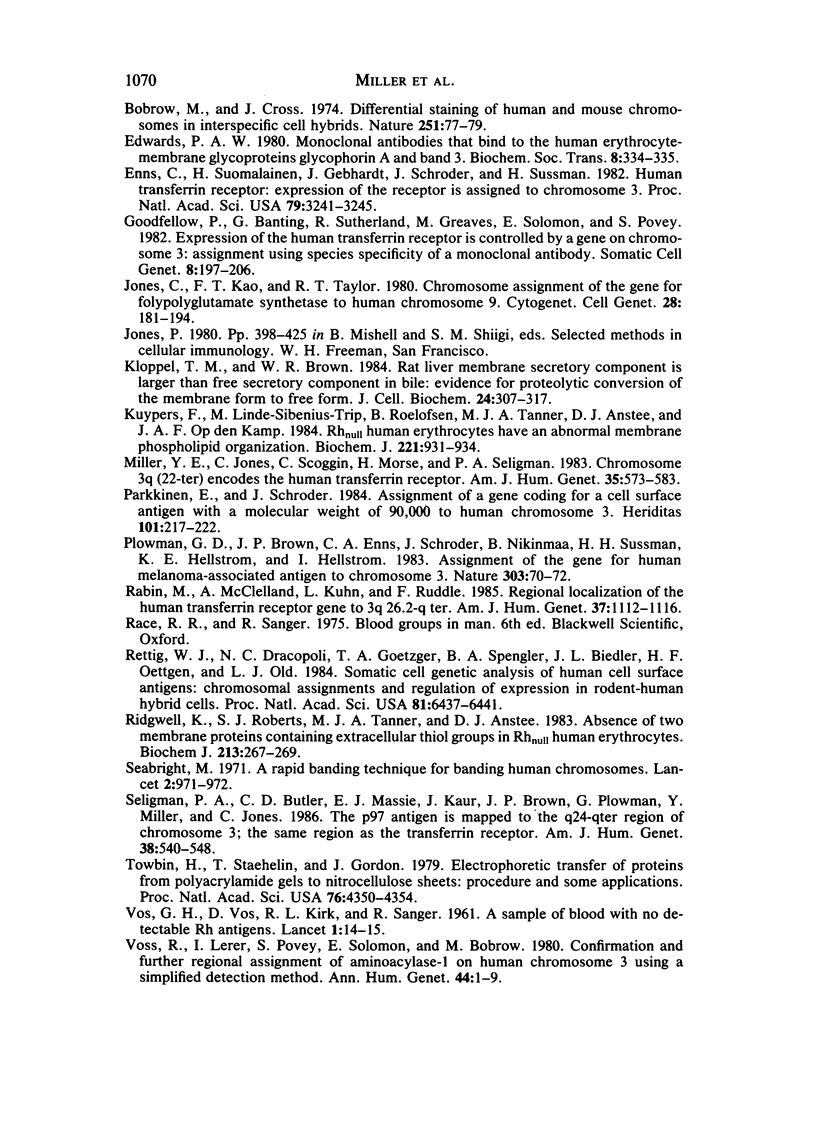
Selected References
These references are in PubMed. This may not be the complete list of references from this article.
- Advani H., Zamor J., Judd W. J., Johnson C. L., Marsh W. L. Inactivation of Kell blood group antigens by 2-aminoethylisothiouronium bromide. Br J Haematol. 1982 May;51(1):107–115. doi: 10.1111/j.1365-2141.1982.tb07295.x. [DOI] [PubMed] [Google Scholar]
- Alhadeff B., Velivasakis M., Siniscalco M. Simultaneous identification of chromatid replication and of human chromosomes in metaphases of man-mouse somatic cell hybrids. (With 1 color plate). Cytogenet Cell Genet. 1977;19(4):236–239. doi: 10.1159/000130814. [DOI] [PubMed] [Google Scholar]
- Anstee D. J., Edwards P. A. Monoclonal antibodies to human erythrocytes. Eur J Immunol. 1982 Mar;12(3):228–232. doi: 10.1002/eji.1830120311. [DOI] [PubMed] [Google Scholar]
- Anstee D. J., Ridgwell K., Tanner M. J., Daniels G. L., Parsons S. F. Individuals lacking the Gerbich blood-group antigen have alterations in the human erythrocyte membrane sialoglycoproteins beta and gamma. Biochem J. 1984 Jul 1;221(1):97–104. doi: 10.1042/bj2210097. [DOI] [PMC free article] [PubMed] [Google Scholar]
- Bobrow M., Cross J. Differential staining of human and mouse chromosomes in interspecific cell hybrids. Nature. 1974 Sep 6;251(5470):77–79. doi: 10.1038/251077a0. [DOI] [PubMed] [Google Scholar]
- Edwards P. A. Monoclonal antibodies that bind to the human erythrocyte-membrane glycoproteins glycophorin A and Band 3 [proceedings]. Biochem Soc Trans. 1980 Jun;8(3):334–335. doi: 10.1042/bst0080334. [DOI] [PubMed] [Google Scholar]
- Enns C. A., Suomalainen H. A., Gebhardt J. E., Schröder J., Sussman H. H. Human transferrin receptor: expression of the receptor is assigned to chromosome 3. Proc Natl Acad Sci U S A. 1982 May;79(10):3241–3245. doi: 10.1073/pnas.79.10.3241. [DOI] [PMC free article] [PubMed] [Google Scholar]
- Goodfellow P. N., Banting G., Sutherland R., Greaves M., Solomon E., Povey S. Expression of human transferrin receptor is controlled by a gene on chromosome 3: assignment using species specificity of a monoclonal antibody. Somatic Cell Genet. 1982 Mar;8(2):197–206. doi: 10.1007/BF01538677. [DOI] [PubMed] [Google Scholar]
- Jones C., Kao F. T., Taylor R. T. Chromosomal assignment of the gene for folylpolyglutamate synthetase to human chromosome 9. Cytogenet Cell Genet. 1980;28(3):181–194. doi: 10.1159/000131529. [DOI] [PubMed] [Google Scholar]
- Kloppel T. M., Brown W. R. Rat liver membrane secretory component is larger than free secretory component in bile: evidence for proteolytic conversion of membrane form to free form. J Cell Biochem. 1984;24(4):307–317. doi: 10.1002/jcb.240240402. [DOI] [PubMed] [Google Scholar]
- Kuypers F., van Linde-Sibenius-Trip M., Roelofsen B., Tanner M. J., Anstee D. J., Op den Kamp J. A. Rhnull human erythrocytes have an abnormal membrane phospholipid organization. Biochem J. 1984 Aug 1;221(3):931–934. doi: 10.1042/bj2210931. [DOI] [PMC free article] [PubMed] [Google Scholar]
- Miller Y. E., Jones C., Scoggin C., Morse H., Seligman P. Chromosome 3q (22-ter) encodes the human transferrin receptor. Am J Hum Genet. 1983 Jul;35(4):573–583. [PMC free article] [PubMed] [Google Scholar]
- Parkkinen E., Schröder J. Assignment of a gene coding for a cell surface antigen with a molecular weight of 90,000 to human chromosome 3. Hereditas. 1984;101(2):217–222. doi: 10.1111/j.1601-5223.1984.tb00918.x. [DOI] [PubMed] [Google Scholar]
- Plowman G. D., Brown J. P., Enns C. A., Schröder J., Nikinmaa B., Sussman H. H., Hellström K. E., Hellström I. Assignment of the gene for human melanoma-associated antigen p97 to chromosome 3. Nature. 1983 May 5;303(5912):70–72. doi: 10.1038/303070a0. [DOI] [PubMed] [Google Scholar]
- Rabin M., McClelland A., Kühn L., Ruddle F. H. Regional localization of the human transferrin receptor gene to 3q26.2----qter. Am J Hum Genet. 1985 Nov;37(6):1112–1116. [PMC free article] [PubMed] [Google Scholar]
- Rettig W. J., Dracopoli N. C., Goetzger T. A., Spengler B. A., Biedler J. L., Oettgen H. F., Old L. J. Somatic cell genetic analysis of human cell surface antigens: chromosomal assignments and regulation of expression in rodent-human hybrid cells. Proc Natl Acad Sci U S A. 1984 Oct;81(20):6437–6441. doi: 10.1073/pnas.81.20.6437. [DOI] [PMC free article] [PubMed] [Google Scholar]
- Ridgwell K., Roberts S. J., Tanner M. J., Anstee D. J. Absence of two membrane proteins containing extracellular thiol groups in Rhnull human erythrocytes. Biochem J. 1983 Jul 1;213(1):267–269. doi: 10.1042/bj2130267. [DOI] [PMC free article] [PubMed] [Google Scholar]
- Seabright M. A rapid banding technique for human chromosomes. Lancet. 1971 Oct 30;2(7731):971–972. doi: 10.1016/s0140-6736(71)90287-x. [DOI] [PubMed] [Google Scholar]
- Seligman P. A., Butler C. D., Massey E. J., Kaur J. A., Brown J. P., Plowman G. D., Miller Y., Jones C. The p97 antigen is mapped to the q24-qter region of chromosome 3; the same region as the transferrin receptor. Am J Hum Genet. 1986 Apr;38(4):540–548. [PMC free article] [PubMed] [Google Scholar]
- Towbin H., Staehelin T., Gordon J. Electrophoretic transfer of proteins from polyacrylamide gels to nitrocellulose sheets: procedure and some applications. Proc Natl Acad Sci U S A. 1979 Sep;76(9):4350–4354. doi: 10.1073/pnas.76.9.4350. [DOI] [PMC free article] [PubMed] [Google Scholar]
- VOS G. H., VOS D., KIRK R. L., SANGER R. A sample of blood with no detectable Rh antigens. Lancet. 1961 Jan 7;1(7167):14–15. doi: 10.1016/s0140-6736(61)92183-3. [DOI] [PubMed] [Google Scholar]
- Voss R., Lerer I., Povey S., Solomon E., Bobrow M. Confirmation and further regional assignment of aminoacylase 1 (acy-1) on human chromosome 3 using a simplified detection method. Ann Hum Genet. 1980 Jul;44(Pt 1):1–9. doi: 10.1111/j.1469-1809.1980.tb00940.x. [DOI] [PubMed] [Google Scholar]


